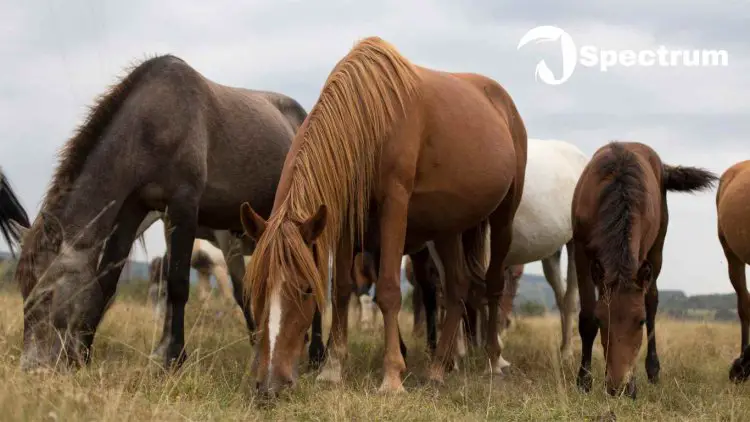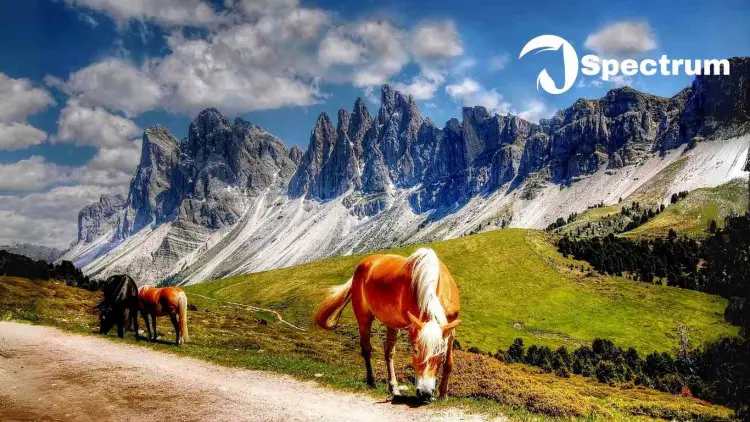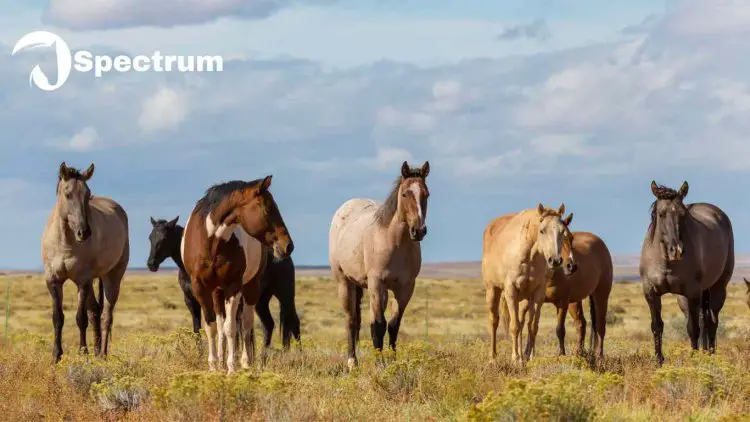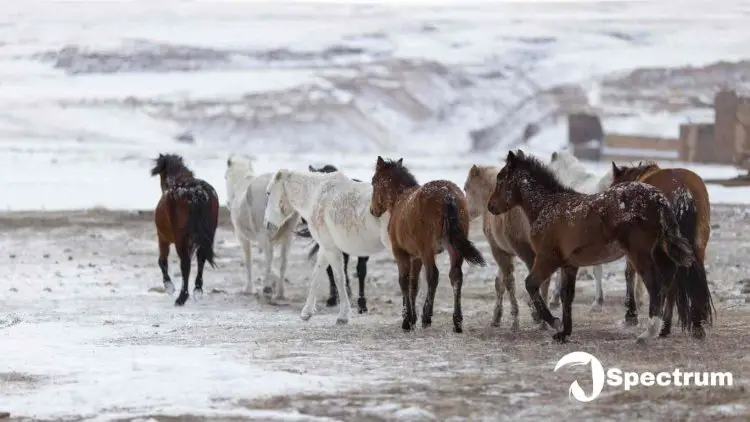What do Wild Horses Eat?
Discover the winter diet of wild horses in this enlightening blog post, "What do Wild Horses Eat, Especially in Winter." Wild horses adapt their eating habits to seasonal changes, particularly during the frosty months. Learn what wild horses eat when their usual grassy meals are blanketed by snow. Understand the eating habits of wild horses, ranging from persistent grasses to woody plant materials. Compare the winter diets of wild and domestic horses, revealing the survival strategies of wild horses as they navigate food scarcity. Dive into the heart of what wild horses eat and how they brave the wintry elements of their habitats.

Table of Contents
Introduction
In the natural wilderness, the animal kingdom often displays fascinating ways of survival, adaptation, and existence. A particular curiosity of many is understanding the diet of wild horses, especially in the challenging winter season. In this comprehensive guide, we delve into what wild horses eat, highlighting the roles of different types of vegetation, and comparing their diet with that of domesticated horses. We also consider the challenges they face while foraging for food during winter and discuss how domestication influences their diet.
What does the diet of wild horses generally consist of?

Wild horses consume a wide variety of vegetation. They predominantly eat grasses and various types of forbs and shrubs. Their ability to graze and forage gives them access to a diverse range of food sources, ensuring they can maintain an optimal diet.
The Role of Grass in a Wild Horse's Diet
Grasses form the primary constituent of a wild horse's diet. Being natural grazers, wild horses eat large quantities of grass for sustenance. Different species of grass provide varying nutritional value, and the horses can specify selectively to maintain a balanced diet. The process of grazing grass assists horses in regulating their metabolic rate, keeping it stable to prevent weight loss or gain. The fiber content in grasses aids in improving the horses' digestive system, minimizing the potential for developing gastrointestinal problems. Moreover, grass is a significant source of water for horses; it contains about 65-75% water, helping them stay hydrated.
How Wild Horses Forage for Different Types of Food
Horses have adapted over time to forage for food as their bodies can simply digest various types of organic material due to the billions of bacteria and other microbes living in their guts. Foraging in horses includes a mix of grazing (eating grasses and other short vegetation) and browsing (eating leaves, twigs, and other parts of woody plants and shrubs). Horses must constantly graze and browse to consume the large amounts of forage needed to maintain their weight and overall health.
What Other Vegetation Do Wild Horses Eat?
Aside from grasses, forbs, and shrubs, wild horses may also consume herbs, leaves, bark, seeds, fruits, flowers, and roots of various plants for additional nutrients. In times of scarcity, they may even resort to eating tree bark or digging up roots. Versatility in their diet allows these horses to survive in both grassland and desert environments. They also need access to fresh water. How much they drink can depend on the moisture content of their food.
How Do Wild Horses Find Food in the Wild?

The wild horse population demonstrates resourcefulness when finding food. Being herd animals, their collective behavior significantly influences their feeding habits, while their physique, notably their distinctive digestive system, enables them to adapt readily to different diets.
The Involvement of the Wild Horse Herd in Finding Food
The herd's cohesive movements offer safety and allow an efficient grazing process. They usually graze together and share the discovered food sources, highlighting the symbiotic relationship within the herd. This herd behavior plays a significant role in how wild horses live and find food in the wild. The migratory habits of wild horses also allow them to move to favorable areas in different seasons, ensuring they have access to food and water throughout the year. They will travel for long distances in search of food and water, covering hilly, rocky terrains, plains, and even across rivers and lakes.
How Equine Digestive System Helps Wild Horses Adapt to Different Diets
The equine digestive system is designed for a foraging diet. It allows wild horses to consume a wide variety of foodstuffs, from grasses to harder-to-digest woody plants. The equine's strong teeth and long digestive tract help process these foods effectively. Thorough chewing, using their robust molars, allows wild horses to break down tough plant fibers and facilitate digestion. Their long digestive tract, specifically the hindgut, aids in fermenting unprocessed fibrous feeds, enabling them to extract nutrients from these materials optimally.
Comparing the Diets of Wild and Domesticated Horses
While wild and domesticated horses share similarities in their diets, domestication often leads to a more restrictive and controlled diet. Domesticated horses primarily eat prepared feed and hay, rarely needing to forage or graze on a variety of plants like wild horses.
| Food Type | Wild Horses | Domestic Horses |
|---|---|---|
| Grasses | Mainly grazes on grasses, plants, and bushes in their natural habitat | Also primarily feeds on grasses, hay, and pasture |
| Forage | Consumes a variety of forage including shrubs, herbs, and woody vegetation | Typically fed hay, grains, and processed feeds such as pellets |
| Diet Diversity | Exhibits diverse diet due to availability in the wild environment | Often limited to a restricted diet based on human feeding practices |
| Protein Source | Acquires protein mainly from grazing on various vegetation types | Obtains protein from hay, grains, and supplements |
| Water Intake | Relies on natural water sources such as rivers, streams, and ponds | Often supplemented with buckets or troughs, but may still graze near water sources |
How Does Winter Affect What Horses Eat in the Wild?

Winter brings about massive changes to what horses eat in the wild. The scarcity of grass and shrubs presents a considerable challenge, but the resourceful wild horse finds ways to survive.
The Challenges for Wild Horses in Finding Food During Winter
The weather drastically impacts the availability of food for wild horses. The shortage of food due to harsh winters is undoubtedly a significant challenge for wild horses. Grass, their primary food source, becomes scarce and they often have to venture farther to locate nutrient-rich food sources. During a mild winter, a horse may still find plentiful grass and forage fields. However, in harsher conditions, they may need to dig through snow to find grass or resort to consuming woody plant matter.
How the Wild Horse Population Survives on Limited Winter Vegetation
Despite the scarcity, wild horses find inventive ways to get their food throughout winter. They adjust their diet to include more twiggy, woody plants, and bark. When forage becomes scarce, they eat whatever vegetation they can find. One of the critical survival strategies that wild horses use during winter is movement. They have to travel much more than usual to find adequate food. This increases their energy expenditure, necessitating even more food consumption to keep up their strength.
The Importance of Woody Plants for Horses in the Wild During Winter
Woody plants play a pivotal role in a wild horse's winter diet. They help provide essential fiber and carbohydrates necessary to withstand the harsh winter conditions, thus ensuring the survival of many wild horses.
How Do Wild Horses Deal with Hydration and Water Source?

Next to food, water sources heavily influence where wild horses live and roam. Their ability to locate and remember water sources is also a critical survival skill, particularly over winter.
The Importance of a Water Source for Wild Horses
Water is an essential component of a horse's diet. Wild horses drink anywhere between 5-10 gallons of water per day, depending on their size, the weather, and their diet. Female horses in lactation and young growing horses will require more than the average amount. Wild horses rely on natural water sources available in their surroundings. They frequently lead them to travel great distances to find a feasible water source.
What Happens if Wild Horses Don't Get Enough Water?
If wild horses don't receive sufficient water, they risk severe dehydration. Dehydration can result in skin drying, which makes the horse's coat lose its shine. Prolonged dehydration could lead to fatal consequences, including vital organ damage or failure. Water also plays a vital role in a horse's digestive system. It aids in the breakdown of food so that nutrients can get absorbed. Without an adequate amount of water, the digestion process slows down, and horses can develop impaction or aggregates in their intestine, causing severe discomfort and potential fatality.
Water Sources for Wild Horses in Winter
Winter sometimes freezes over water sources, making hydration a challenging task. Wild horses overcome this by consuming snow or breaking ice on frozen water sources to drink. They can survive even with limited water availability throughout the winter. Artificial ponds or troughs can be created and filled regularly to support the hydration of these free-roaming animals.
What's Your Reaction?

















